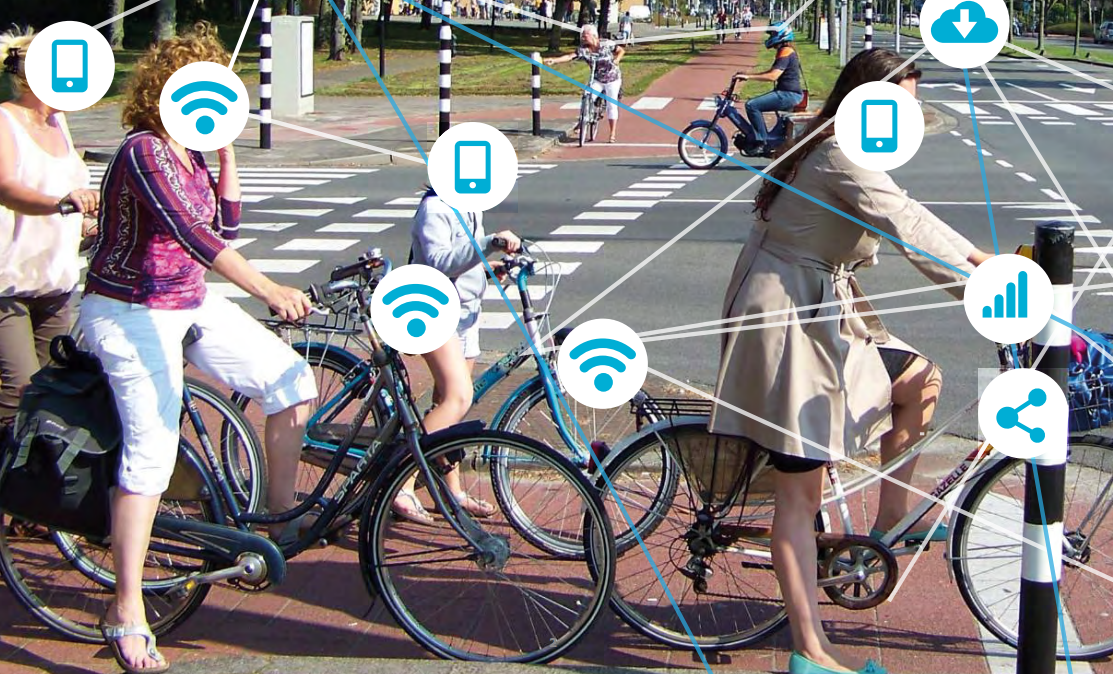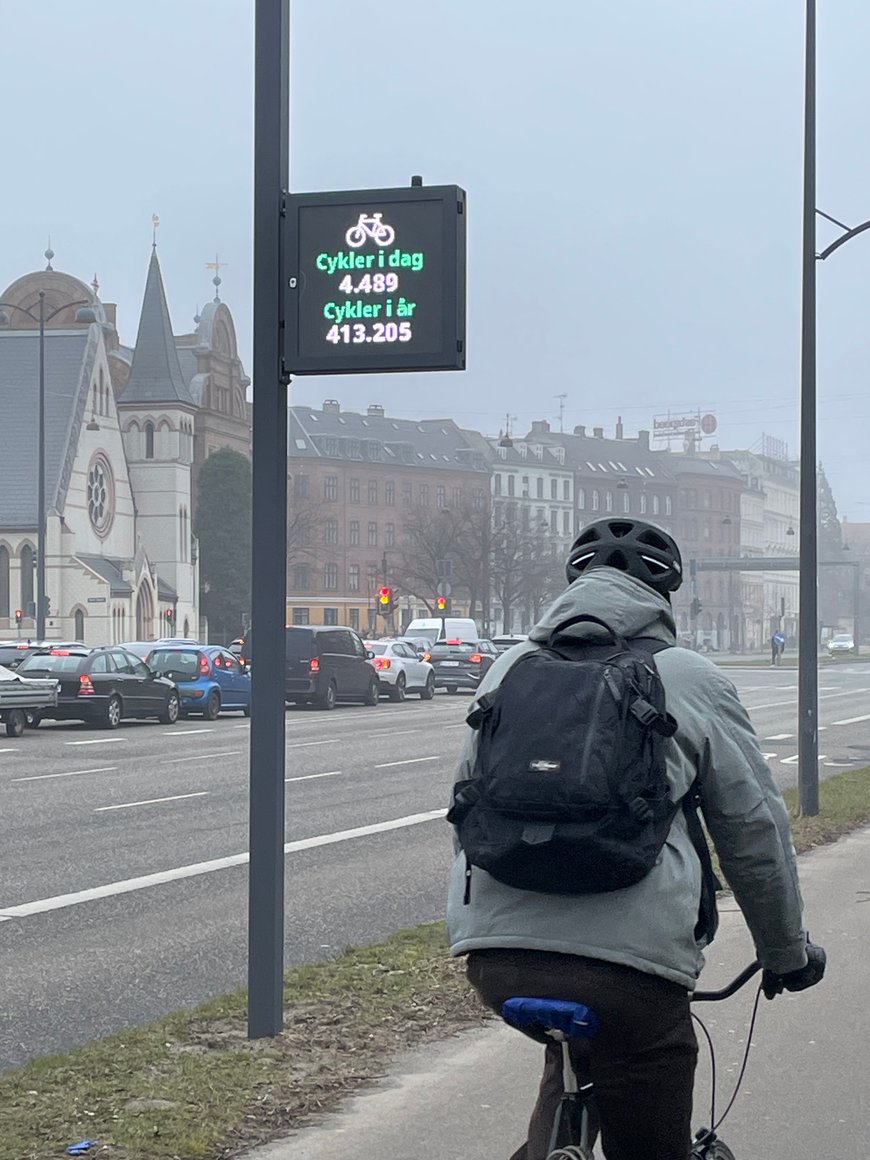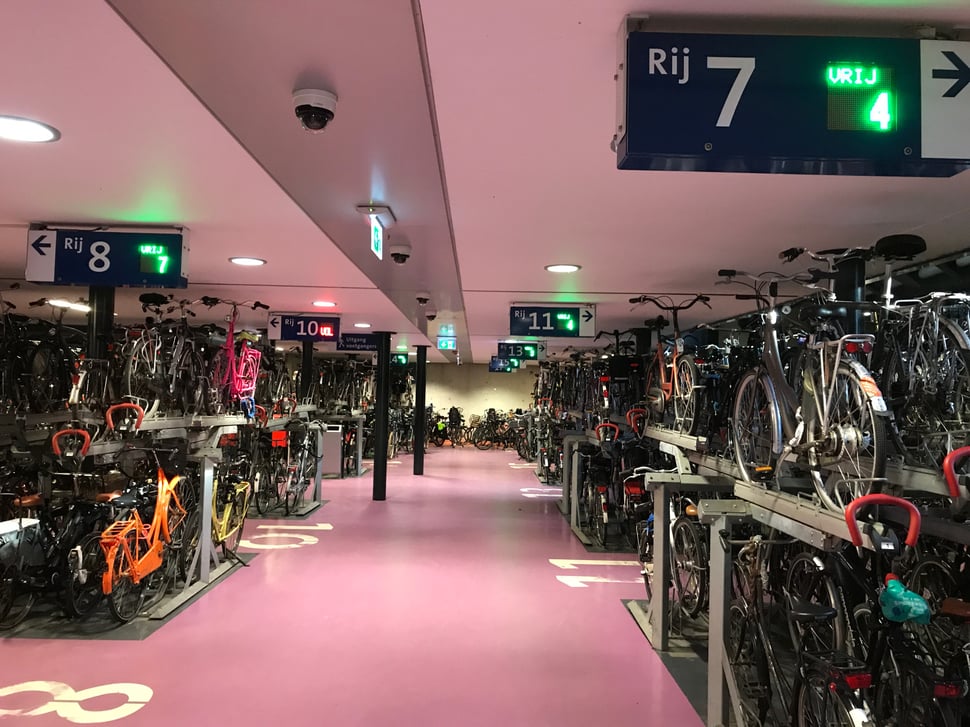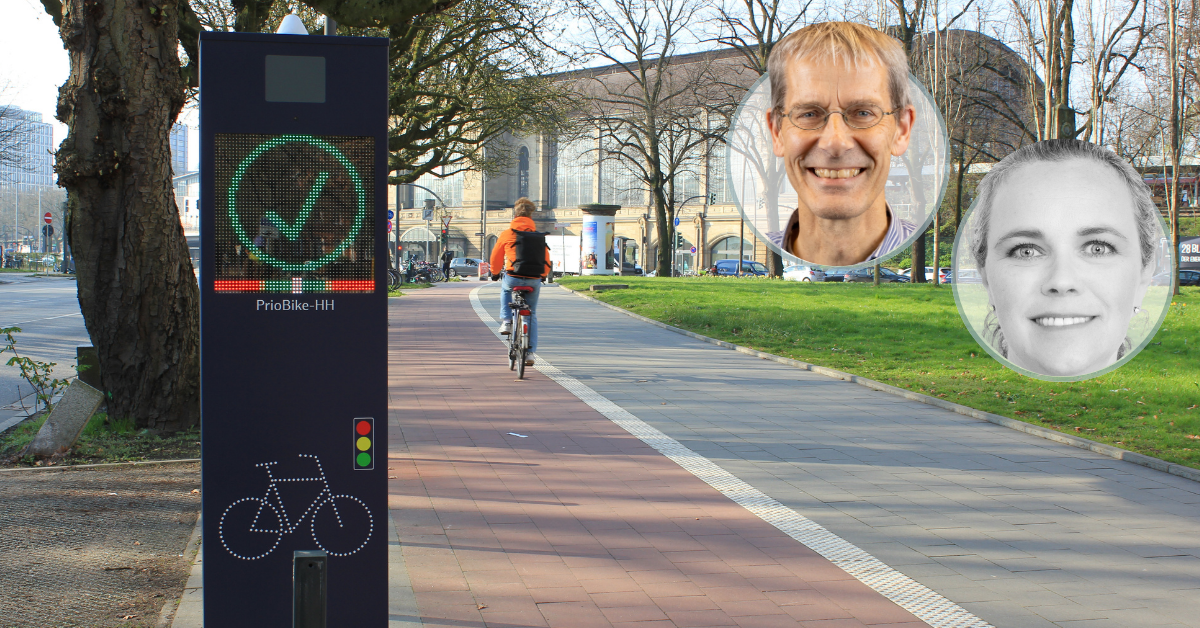Bicycle connectivity: Chain reactions
A new, pan-European project is bringing bicycles into the connected-vehicle ecosystem in order to enable signal prioritization, improved safety and smarter traffic management.
Words: Jack Roper
Cycling is good for individuals, transport networks and the planet, but does it need to get smarter? Development of cooperative intelligent transport systems (C-ITS) has primarily focused on motorized vehicles and while cycling’s benefits are acknowledged, perceptions of it being an essentially bucolic activity requiring only physical infrastructure persist. Now, the authors of the European Roadmap for Smart Cycling believe the time is ripe for a digital infrastructure layer to transform the cycling experience.
“In the connected vehicle domain, cyclists are mainly seen as additional road users to avoid running over,” says MegaBITS project manager, Ronald Jorna. “They don’t see an individual who can derive benefits from infrastructure beyond safety. We want to give cyclists an equal position to cars in the digital mobility system.”
The Smart Cycling Roadmap is the fruit of collaboration between two European projects: MegaBITS, focused on implementing ITS for cycling in the Interreg North Sea region, and MERIDIAN, aiming to roll out C-ITS across Europe’s Scandinavian-Mediterranean and North Sea-Baltic highway corridors. From a highways perspective, cycling offers means to relieve congestion by removing local commuter traffic from major routes around urban nodes.
“Cycling is increasingly an element of traffic management, because without the modal shift, it will be hard to reach environmental goals,” says Stephanie Kleine, senior advisor for Autonomous and Connected Mobility at the Ministry for Environment, Nature and Transport in North Rhine-Westphalia. “In MERIDIAN, we already have implementations using existing ITS and C-ITS systems and short-range communication for cycling.” The Roadmap envisions a European ecosystem for smart cycling… but what exactly does that mean?
“Cycling is increasingly an element of traffic management, because without the modal shift, it will be hard to reach environmental goals,”
— Stephanie Kleine, senior advisor for Autonomous and Connected Mobility, Ministry for Environment, Nature and Transport, North Rhine-Westphalia.
“Smart cycling is everything with a chip inside,” says Jorna. “That can be the traffic light, the bicycle or the cyclist’s mobile phone. It can be exchanging information between the cyclist and the roadside or car users, or standalone services like route information or safety warnings. It also encompasses the cycling data which feeds those systems and informs policy-makers.”
The idea of a European Roadmap took seed at the 2023 ITS European Congress in Lisbon, where Jorna (from the Dutch Province of Overijssel) and Kleine (representing Germany’s North Rhine-Westphalia) discovered a shared conviction that smart cycling’s time was at hand. Kleine’s work is rooted in an ITS community which has traditionally viewed cycling only in terms of physical routes.
“We have so much knowledge about ITS, C-ITS and automated driving for motorized vehicles,” she says. “Why not apply that to cycling? We felt a momentum to push and, if we succeeded, bring together experts to think about gaps, obstacles, use cases and first actions to advance smart cycling – without the 20 years’ work needed for motorized transport.”

Connected cyclists at a Dutch-style intersection – giving bikes an equal role in the digital mobility system. (Credit: Mobycon)
Collecting data
Jorna and Kleine channeled this momentum into a Smart Cycling Taskforce which produced the European Roadmap. Presented two years later at ITS Europe in Seville, this constitutes a call to action, elaborating a vision together with the obstacles to achieving it. Kleine says a document which may at first appear dry and abstract is animated for audiences by concrete examples of real-world implementations.
“In the Netherlands, there is an app to stimulate cycling,” says Jorna. “It captures anonymized data on every trip a cyclist makes. They collect points and get rewards, like a free cake with their coffee. At the same time, it provides valuable cycling data to six Dutch provinces, including MegaBITS project leader, the Province of Overijssel.”
Implementations often combine benefits for cyclists with acquisition of data to inform policy and enable digital services. In Copenhagen, variable message signs which convey real-time safety or detour information to cyclists are also counting-poles providing bicycle traffic data to relevant authorities. In Withernsea, England, less affluent citizens were given free bikes in return for consenting to GNSS tracking which generates cycling data.

Real-time cyclist counting and messaging in Copenhagen supplies data for smarter traffic management. (Credit: MegaBITS)
“Utrecht station has underground parking for over 10,000 bicycles,” says Jorna. “Dynamic signage shows cyclists how many spaces are available and on what floor. By counting bicycles, this system also shows the city authority how the facility is used and whether existing capacity is sufficient. It also reveals abandoned, so-called orphan bikes which need to be removed.”
“Utrecht station has underground parking for over 10,000 bicycles. Dynamic signage shows cyclists how many spaces are available and on what floor.”
— Ronald Jorna, project manager, MegaBITS.

Utrecht’s 10,000+ bike parking: digital signage guides riders and delivers valuable usage data. (Credit: MegaBITS)
MegaBITS and its predecessor project BITS have documented over 100 instances of smart cycling. Bike-sharing schemes across Europe are inherently ‘smart’ since built around app-based interaction. Sensor-equipped sniffer bikes measure particle emissions and provide data on polluted routes to city planners. Rain sensors enable traffic lights to increase priority for cyclists in wet conditions. Dynamic lighting activates only when cyclists traverse a path.
Floating bicycle data (FBD) is a key smart cycling enabler. Whereas traditional cycling data counts cyclists at one fixed location, FBD uses GNSS tracking to follow cyclists from origin to destination. The Overijssel app tracks cyclists every three second per minute, whereas See.Sense smart trackers do so 800 times per second, capturing speed and braking data which could inform safety improvements.
“Cities need to define the purpose of using floating bike data,” says Jorna. “Do they just need to know the routes cyclists take, or how fast they travel on every part of the journey? Data from apps like Strava is not always representative, because users typically cycle at evenings or weekends, go twice as fast and take completely different routes to the average commuter.”
Beginning the journey
The Roadmap’s intended audience includes the European Commission Directorate-General for Mobility and Transport (DG MOVE), whose funding mechanisms could be marshalled to support the creation of a European platform for the cycling and ITS industries to collaboratively advance the concept. Seville provided a forum to present the Roadmap to Europe’s ITS stakeholders.
“We were curious to see how people responded and a little nervous, because of course it’s our baby,” says Kleine. “They looked perhaps skeptical at first, but when they saw the examples they said, Yes, we have to do something! It was also well-received at Eurobike in Frankfurt, where organizers suggested making bicycle-car interaction a more visible topic in next year’s exhibition.”
The Roadmap is a balanced document which outlines not only a vision but also the gaps and obstacles to achieving it. Safety, data protection and security, legal and regulatory frameworks, financing, economic sustainability and public acceptance are areas where work lies ahead. For Kleine, data harmonization and standardization represent the most urgent steps to address.
“We have processes and organizations already from the motorized vehicle ITS story,” she says. “The Commission has urged member states to make data available in a common format via a national access point (NAP) where the Garmins, Googles and TomToms can find it, rather than on hundreds of cities’ internet pages. We need to bring that knowledge to cycling actors.”
Working together
Harmonized standards would make it easier for industry to develop and operate smart cycling apps and services across Europe and enable policy based on pan-European analysis. The convergence of two projects, MegaBITS and MERIDIAN, in the Smart Cycling Taskforce has established propitious connections to this end.
“Cycling is handled on a regional or city level, like MegaBITS in Interreg,” says Kleine. “Standardization is done on the European level through projects like C-Roads and NAPCORE. Our joint initiative created a stable link which helps get smart cycling to a level where everyone can work together on harmonization and specification.”
One admission which stands out in the Roadmap is that the economic value of cycling data is unclear and business cases for cycling data are rare. If commercial returns on apps and services prove doubtful, then surely a smart cycling ecosystem becomes less feasible. An econometrist by training, Jorna argues that if the benefits are societal rather than economic, there may be a case for public authorities to sponsor the concept.
“Of course, a business needs to earn money,” says Kleine. “Nevertheless, we all have a little computer with us, so there is intelligence on the bike, and with e-bikes there is energy onboard, too. Road authorities are collecting more and more cycling data. The NAPs are coming to blossom. It will grow – and once standardized cycling data is available to everyone, we can add weight to the business-case.”
Find out more at https://www.interregnorthsea.eu/megabits/project-deliverables
Leaders of the pack
Levels of cycling are unevenly distributed across Europe, with northwestern member-states leading the way. The only country with more bicycles than people is the Netherlands, where 58% of people cycle every day and 41% consider the bicycle their primary means of transport. In terms of daily cyclists, it is followed by Germany (36%), Sweden (31%) and Belgium (17%). In Denmark, Copenhagen is often cited as the world’s most bicycle-friendly city.
One success story is Paris, where cycling has more than doubled since pre-pandemic levels, thanks in part to Plan Vélo policy interventions.
“During Covid, Paris took lanes away from cars and dedicated them to cyclists,” says Ronald Jorna. “That has continued and cycling numbers have steeply increased. Paris was also early to adopt a bike-sharing scheme - Vélib' Métropole – which improved people’s access to cycling.”
Trailing behind
Despite the positive story in some areas many southern and eastern European countries commuting by bicycle is uncommon, even in the flattest of cities. In Greece and Bulgaria, only 2% consider the bicycle their primary mode – the same figure, incidentally, as in the UK. Lack of investment in cycling infrastructure tends to make cycling to work unfeasible.
“Sometimes I feel guilty promoting smart cycling in countries with no bicycle infrastructure,” says Ronald Jorna. “It wouldn’t feel good, putting them into an unsafe environment.”
Stephanie Kleine agrees that physical infrastructure comes first and must be in place before a digital layer can improve the cycling experience. “Smart cycling will not lead the modal shift,” she adds. “But it’s the element we can contribute to that larger story.”
From a UK perspective, one problem with the vision of cyclists as equals in a system of smart co-operation with cars is the active antagonism between cyclists and drivers often witnessed today. Jorna believes driver hostility tends to diminish as bicycle numbers increase.
“In the Netherlands, every new driver learns to look round their right shoulder for cyclists,” says Jorna. “In Greece or Bulgaria, the chance of finding a cyclist beside you is less than 1%, but in the Netherlands, there may be two or three! As cycling becomes more normalized, drivers learn to take it into account.”
Signal priority
In Zwolle, over 50% of all trips are made by bicycle. The Dutch city has extended technology used to give green light priority to emergency vehicles to give faster green to cyclists. It the Overijssel cycling reward scheme app, which participating cyclists must have turned on in their pocket so that it does not distract them whilst riding.
“Many traffic lights have a button which cyclists can push, then wait a certain time for green,” says Jorna. “Now, the traffic light connects to that app via the cloud and already knows they’re approaching. Even greater priority is given to bike couriers – a limited number at present – providing a competitive advantage over fossil-fueled vans.”
This article is an edited preview of one that will appear in the forthcoming Intertraffic World 2026.
Share your story
Do you have an innovation, research results or an other interesting topic you would like to share with the professionals in the infrastructure, traffic management, safety, smart mobility and parking industry? The Intertraffic website and social media channels are a great platform to showcase your stories!
Please contact our Sr Brand Marketing Manager Carola Jansen-Young.
Are you an Intertraffic exhibitor?
Make sure you add your latest press releases to your Company Profile in the Exhibitor Portal for free exposure.
Get up to speed on the mobility industry - our newsletter straight to your inbox!


.png?h=600&iar=0&w=1200)